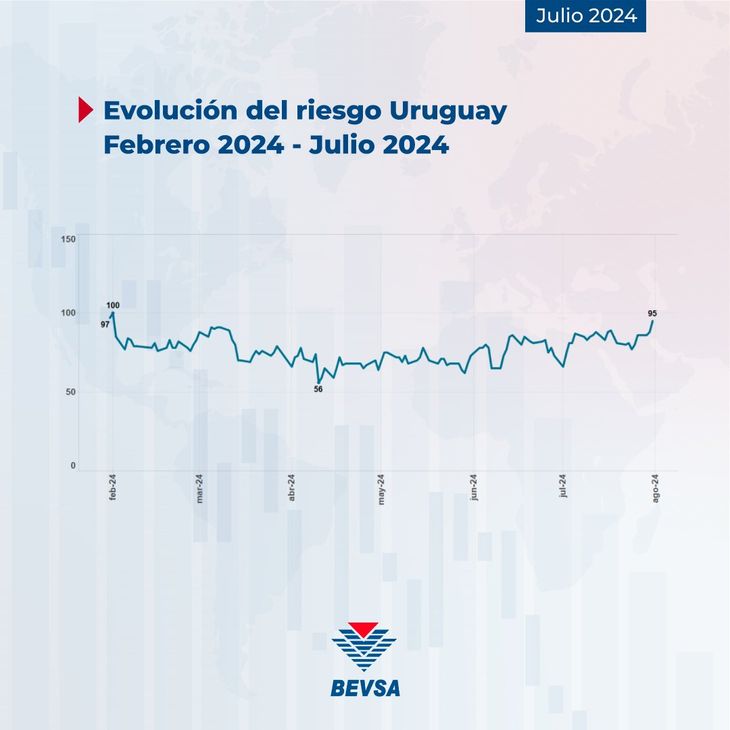The Irubevsa index formulated by the Electronic Stock Exchange rose to 95 basis points during the last day of last month.
He Uruguay Risk Index (Irubevsa) formulated by the Electronic Stock Exchange of Uruguay (Bevsa) closed July at its highest value since early February, after gaining some 22 basis points over the course of last month.
The content you want to access is exclusive for subscribers.
The Irubevsa, which measures the spread of yield on the debt of Uruguay in dollars with respect to the debt of USA (US Treasuries), rose from 73 to 95 basis points (or 0.95% annually) between June and July, marking the highest monthly close since the 97 basis points with which January ended.


According to the latest monthly bulletin from Bevsa for the month of July, the increase in Irubevsa is explained by the fact that, although both curves decreased, that of the UST did so to a greater extent on all nodes. As a result, all spreads increased, directly impacting an escalation of the index.
In turn, a value of 95 basis points represents a clear increase compared to the previous month (73 basis points), and positions the index above the value of a year ago, when the index reached 82 basis points at the close of July 2023.
In historical terms, this is the highest value of the index since February 1 of this year, when it reached 100 basis points. In the last twelve months, the month with the lowest closing was April, with a mark of 64 basis points.
Irubevsa.jpg

The Uruguay Bond Index of República AFAP closed July at 85 basis points
For its part, the Uruguay Bond Index (UBI) produced by AFAP Republic closed July at 85 basis points, after reaching a monthly (and annual) peak of 115 basis points on July 15.
Last Tuesday, the UBI closed at 91 basis points, after falling from the monthly record of 102 basis points marked on Monday, and opening the month of August at 88 basis points.
The UBI is calculated daily and reflects the average spread or difference between the yield on Uruguayan bonds and the yield on US Treasury bonds. The existence of a spread between the yield on a country’s sovereign bonds and that of the United States (considered the country with the lowest level of risk in the world) is usually attributable to a premium for the risk of default or failure to meet the conditions of the debt.
On the other hand, the Indexed Bond Index (IBI) of the Republic AFAP, which reflects the average spread between the yield of the bonds issued in Indexed Units and the yield of the TIPS (Treasury Inflation Protected Securities) issued by the US government, closed July down 122 basis points.
Source: Ambito




